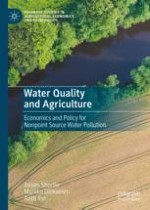2021 | OriginalPaper | Buchkapitel
4. Decision Making at the Farm Level
verfasst von : James Shortle, Markku Ollikainen, Antti Iho
Erschienen in: Water Quality and Agriculture
Aktivieren Sie unsere intelligente Suche, um passende Fachinhalte oder Patente zu finden.
Wählen Sie Textabschnitte aus um mit Künstlicher Intelligenz passenden Patente zu finden. powered by
Markieren Sie Textabschnitte, um KI-gestützt weitere passende Inhalte zu finden. powered by
